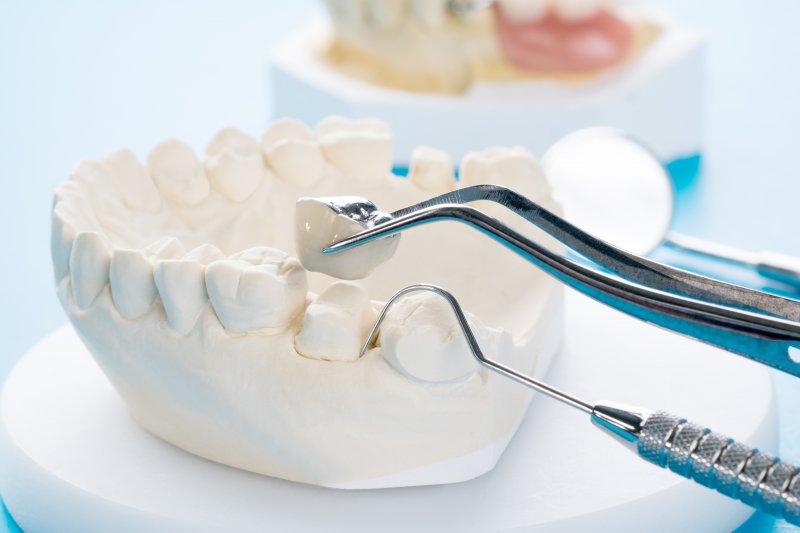
Dental crowns are a common solution for restoring damaged or weakened teeth. But with so many materials available, choosing the right one can be daunting. After all, each medium offers unique benefits depending on your dental needs and preferences. So, which one is best? Continue reading to find a guide to help you decide which dental crown material works for your smile.
Metal or Gold Alloy Dental Crowns
Metal and gold alloy crowns have been used for many years and are known for their strength.
Pros:
- Durability: Metal and gold are highly resistant to wear and breakage, making these crowns extremely long-lasting.
- Less Reactive: Gold alloy, specifically, is less likely to cause allergic reactions and gum irritation.
Cons:
- Less Aesthetic: The metallic color of these crowns is quite noticeable, making them less suitable for visible front teeth.
- Cost: Gold crowns can be more expensive due to the material cost.
All-Porcelain Dental Crowns
All-porcelain or all-ceramic crowns are known for their superior aesthetics, making them a popular choice for front teeth restorations.
Pros:
- Best Aesthetics: These crowns offer the closest match to the natural translucency and color of your teeth.
- Biocompatible: Porcelain crowns are metal-free, reducing the risk of failure, infection, and irritation.
Cons:
- Less Durable: They are not as strong as metal-based crowns and may be more prone to chipping or breaking, especially under heavy biting forces.
- Not Ideal for Back Teeth: Due to their tendency to chip or crack under repeated pressure, they are less suited for molars at the back of your mouth.
Porcelain-Fused-to-Metal (PFM) Crowns
Porcelain-fused-to-metal crowns have been a staple in dentistry for decades. They combine the strength of metal with the aesthetic appeal of porcelain.
Pros:
- Strength and Durability: The metal core provides a strong foundation, making these crowns good for most teeth.
- Natural Appearance: The porcelain layer is matched to your natural tooth color, offering a more attractive look compared to all-metal crowns.
Cons:
- Wear on Opposing Teeth: The porcelain can be abrasive to your other teeth, potentially causing excessive wear.
- Metal Line at Gum: Over time, the metal base may become visible at the gum line, especially if your gums recede.
So, How Do I Choose?
Even with all the information laid out, it can still be difficult to decide which crown material to choose. Here are some factors to consider:
- Location: Where is your crown going? If it’s a back tooth, a metal or gold crown may be better as it can withstand more biting force. If it’s a front tooth, a porcelain or PFM crown would look better.
- Budget: The cost of some crown materials can be prohibitive, so your finances can often be a determining factor.
- Dentist Recommendation: Your dentist has years of experience helping patients decide and can help steer you in an optimal direction.
Choosing the right dental crown material is crucial for ensuring your restoration is both functional and aesthetically pleasing. By understanding the strengths and limitations of each option, you can make a choice that keeps your smile both beautiful and strong!
About the Author
Dr. Daniel Weldon is a friendly and passionate dentist who puts his family and community first. After receiving his Doctor of Dental Medicine from the University of Florida College of Dentistry, he began his practice alongside his wife, Elizabeth. Since then, he has continued building his skills through Spear Education to better serve his patients. Call (352) 622-3236 to schedule an appointment at Weldon Implant and Cosmetic Dentistry of Ocala or visit the website to learn more.

